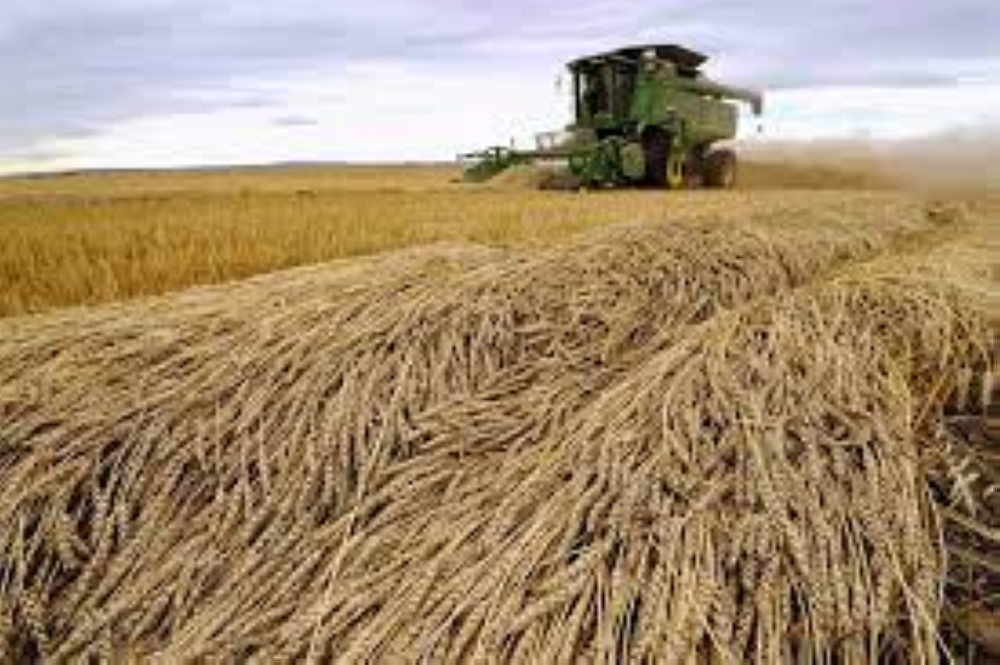Improve wheat production in Namibia
Access to wheat seed varieties that can perform better in Namibian climatic and soil conditions is one of the main factors hindering wheat productivity and production in Namibia.
According to the 2020/2021 financial year’s production and trade statistics, the total domestic demand for wheat grain in Namibia stood at 137 340 tonnes per annum, translating into an average domestic demand of 11 445 tonnes per month.
Out of the total domestic demand recorded during 2020/2021, only 11 498 (8%) tonnes were produced locally and 125 838 tonnes were imported.
The Namibian Agronomic Board (NAB) in collaboration with the University of Namibia hosted a wheat field day at the Mannheim Research Station in the Tsumeb Area at the end of last year.
The event was attended by 61 farmers from the Karst area in the Maize Triangle and other industry stakeholders.
According to the NAB, the main objective of the field day was to accelerate the development of high-yielding wheat seed varieties that are adapted to Namibia’s climatic and soil conditions.
“This is the first-ever wheat seed variety trial of this magnitude to be conducted in Namibia for all the agronomic production zones.”
The field day also aimed to equip farmers with fist-hand information on the performance of the different varieties of what of the different varieties of wheat under trial at the research station.
Wheat is planted from May to July and harvested and marketed from October to January.
It is currently cultivated in five productions zones; namely Kavango, North Central, Karstland, Central/East and South.
“However, the biggest volume of wheat is produced in the Kavango and Hardap agronomic zones and the biggest market for wheat grain is in the central production zone (Windhoek),” says the NAB.
“Furthermore, Namibia is also a net importer of wheat seeds, mainly sourced from South Africa through various input suppliers.”
The NAB and Unam is therefore conducting wheat seed variety trials at five sites; namely Mashare Irrigation and Divindu Correctional Facility in the Kavango production zone, Zambezi Vocational Training Centre in the Zambezi production zone and Eldorado farm in the Southern production zone respectively.
“Out of all the 52 different wheat seed varieties planted at the 5 different sites, a total of 49 were sourced from the International Maize and Wheat Improvement in Mexico, while the remaining 3 were imported from South Africa through local input suppliers.”
The NAB says that all of the varieties were successfully planted at all five sites during June/July last year and successfully harvested in November.
The top ten performing wheat varieties in terms of grain yield will be selected for the second or final trials to be conducted this year before the commercial release of the varieties in the third year.
According to the 2020/2021 financial year’s production and trade statistics, the total domestic demand for wheat grain in Namibia stood at 137 340 tonnes per annum, translating into an average domestic demand of 11 445 tonnes per month.
Out of the total domestic demand recorded during 2020/2021, only 11 498 (8%) tonnes were produced locally and 125 838 tonnes were imported.
The Namibian Agronomic Board (NAB) in collaboration with the University of Namibia hosted a wheat field day at the Mannheim Research Station in the Tsumeb Area at the end of last year.
The event was attended by 61 farmers from the Karst area in the Maize Triangle and other industry stakeholders.
According to the NAB, the main objective of the field day was to accelerate the development of high-yielding wheat seed varieties that are adapted to Namibia’s climatic and soil conditions.
“This is the first-ever wheat seed variety trial of this magnitude to be conducted in Namibia for all the agronomic production zones.”
The field day also aimed to equip farmers with fist-hand information on the performance of the different varieties of what of the different varieties of wheat under trial at the research station.
Wheat is planted from May to July and harvested and marketed from October to January.
It is currently cultivated in five productions zones; namely Kavango, North Central, Karstland, Central/East and South.
“However, the biggest volume of wheat is produced in the Kavango and Hardap agronomic zones and the biggest market for wheat grain is in the central production zone (Windhoek),” says the NAB.
“Furthermore, Namibia is also a net importer of wheat seeds, mainly sourced from South Africa through various input suppliers.”
The NAB and Unam is therefore conducting wheat seed variety trials at five sites; namely Mashare Irrigation and Divindu Correctional Facility in the Kavango production zone, Zambezi Vocational Training Centre in the Zambezi production zone and Eldorado farm in the Southern production zone respectively.
“Out of all the 52 different wheat seed varieties planted at the 5 different sites, a total of 49 were sourced from the International Maize and Wheat Improvement in Mexico, while the remaining 3 were imported from South Africa through local input suppliers.”
The NAB says that all of the varieties were successfully planted at all five sites during June/July last year and successfully harvested in November.
The top ten performing wheat varieties in terms of grain yield will be selected for the second or final trials to be conducted this year before the commercial release of the varieties in the third year.





Comments
Namibian Sun
No comments have been left on this article